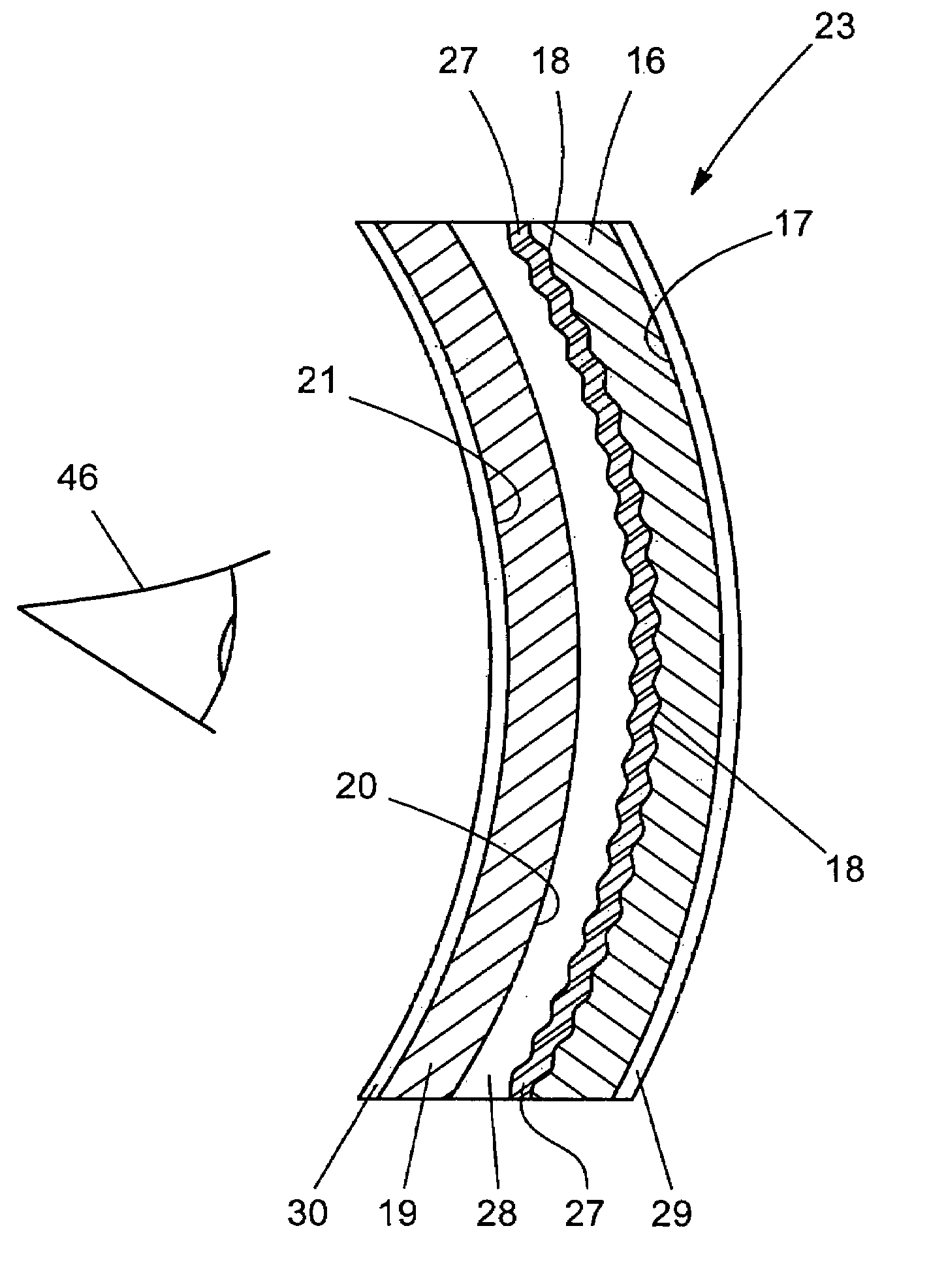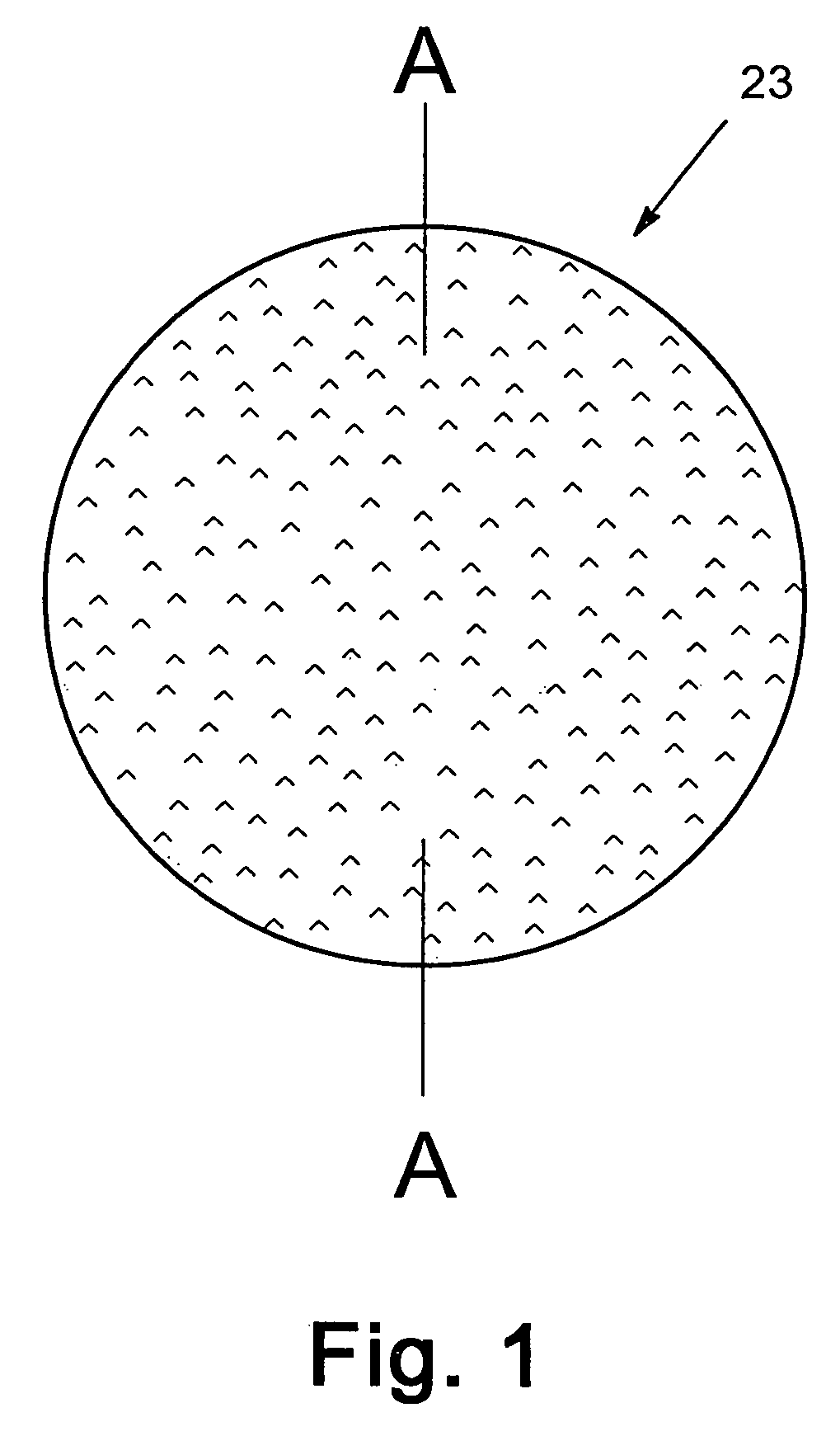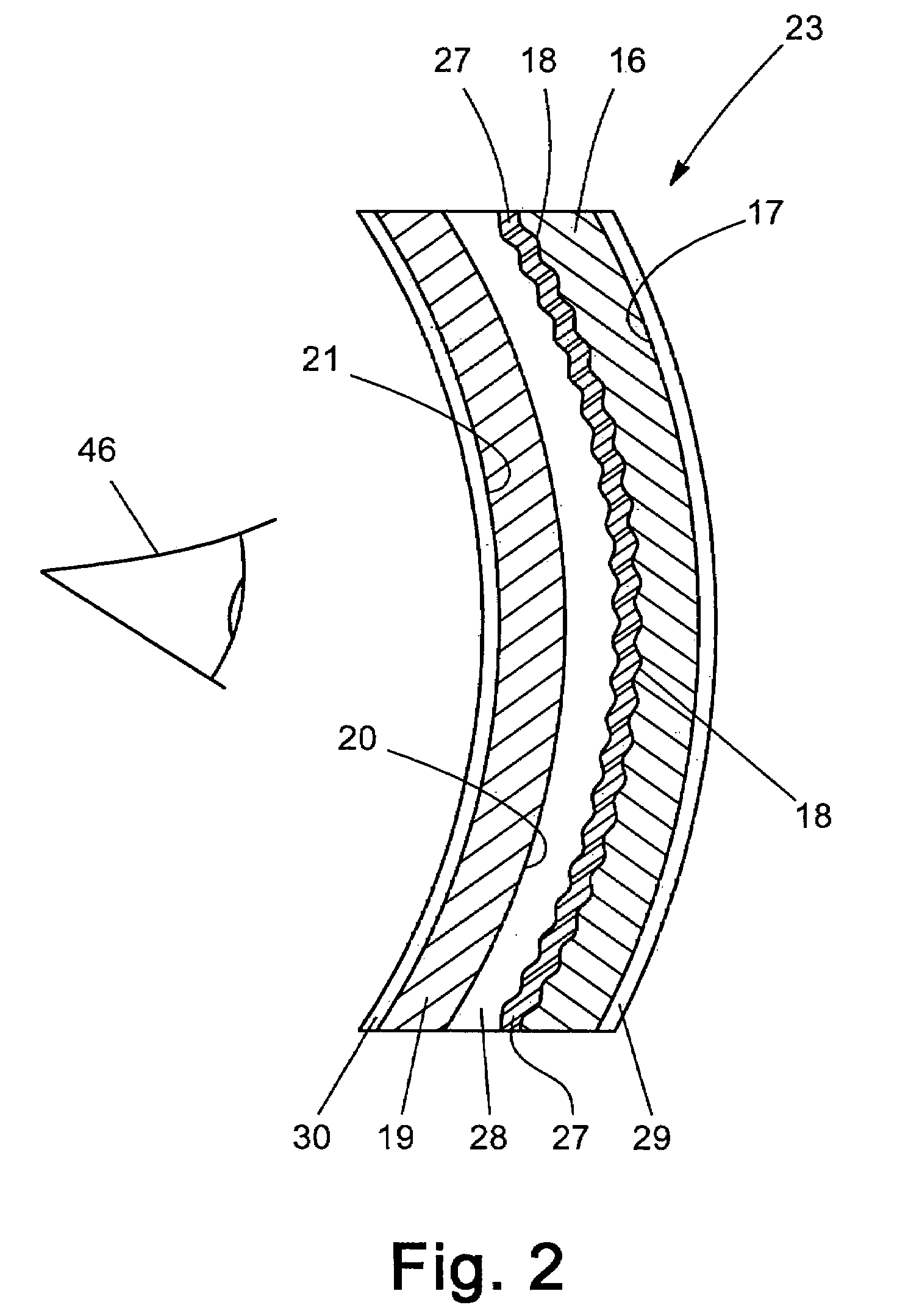Uniform diffuse omni-directional reflecting lens
a technology of diffuse omni-directional reflection and diffuser, which is applied in the field of uniform diffuse omni-directional reflecting lenses, can solve the problems of difficult new product development, limited fashion choice among lenses, and in particular light diffraction patterns, so as to reduce the observability of the resultant eyewear, reduce the amount of contrast, and good reflective properties
- Summary
- Abstract
- Description
- Claims
- Application Information
AI Technical Summary
Benefits of technology
Problems solved by technology
Method used
Image
Examples
Embodiment Construction
[0037]The Uniform Diffuse Omni-directional Reflecting Lens of the present invention, hereinafter referred to as a Diffuse Reflecting Lens, is a multi-layer lens construction to be used in an eyewear system as a sunglass lens or a fashion lens that reflects light in a diffuse manner. The following is a discussion of the various ways in which the Diffuse Reflecting Lens may be constructed, manufactured, and installed in an eyewear system such as a dual-lens eyewear system or a unitary lens eyewear system. A dual-lens eyewear system has two lens locations into which two separate lenses may be installed. The two lens locations of a dual-lens eyewear system are arranged in a left and right orientation coincident with a wearer's normal line of sight for each eye. A unitary lens eyewear system uses a single lens commonly referred to as a unitary lens. A unitary lens is a single lens that extends through a wearer's normal line of sight for both eyes. Unitary lenses are commonly used in ski ...
PUM
 Login to View More
Login to View More Abstract
Description
Claims
Application Information
 Login to View More
Login to View More - R&D
- Intellectual Property
- Life Sciences
- Materials
- Tech Scout
- Unparalleled Data Quality
- Higher Quality Content
- 60% Fewer Hallucinations
Browse by: Latest US Patents, China's latest patents, Technical Efficacy Thesaurus, Application Domain, Technology Topic, Popular Technical Reports.
© 2025 PatSnap. All rights reserved.Legal|Privacy policy|Modern Slavery Act Transparency Statement|Sitemap|About US| Contact US: help@patsnap.com



